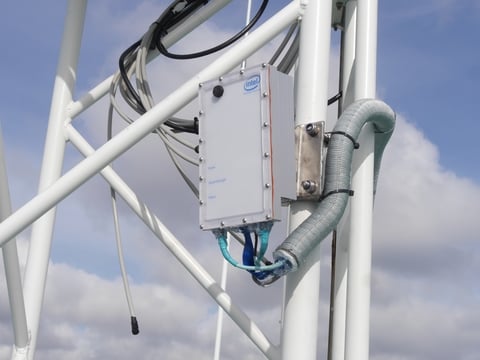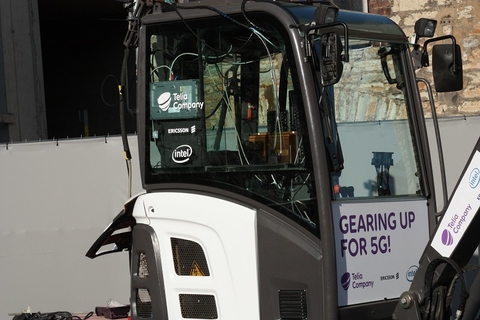Getting to 5G sooner rather than later is the name of the game for Telia, so it has deployed what it considers the first public 5G live network use cases in Europe with the help of Ericsson and Intel.
The use cases include equipping a Tallink cruise ship with a 5G network while in harbor and remotely controlling a construction excavator via 5G at the EU Digital Summit in Tallinn, Estonia.
The companies are using millimeter wave spectrum but are not disclosing which frequencies are being tested, a spokesperson told FierceWirelessTech. The solution includes an Ericsson 5G base station consisting of 5G antenna, radio and baseband, in conjunction with the Intel 5G Mobile Trial Platform.
They equipped the cruise ship—where thousands of passengers are using Wi-Fi and generating enormous loads of data—with 5G to prove that 5G enables value in real life, according to Mattias Manni, network strategy and planning manager for 5G at Telia Eesti.

aboard the Tallink Silja Europa cruise ship
in Tallinn, Estonia.(Image: Intel)
The “real life” 5G environment for the shipping company Tallink was created at the Port of Tallinn, Estonia, to test and explore how 5G technology can provide higher data connection speeds and improved quality. During the test, which was conducted this month, pre-standard 5G enabled Wi-Fi usage for 2,000 passengers and the ship’s own information and communications technology systems.
The industrial use case involving the construction excavator used an augmented reality remote control operated over an ultrafast live 5G link with very low latency to show how 5G can be used in hazardous environments—operating the machine from the safety of an office.
Telia said the demonstrations mark an important milestone in the global 5G road map, moving Ericsson, Intel and Telia—and, more importantly, Telia customers—closer to the goal of bringing 5G services to life in both Tallinn and Stockholm in 2018, said to be two of the most digitalized cities in the world.

remotely controlled an industrial excavator
over a 5G network. (Image: Intel)
“We want to be early with 5G and will bring it to life in Stockholm, Tallinn and Helsinki in 2018,” said Gabriela Styf Sjöman, global head of Networks at Telia, in a statement. “It’s not only about building a new network but it’s also about building a new way of thinking and perceiving what a mobile network can be and can do. High speed, low latency, guaranteed capacity and truly mobile is going to push the boundaries of digitalization and we want to be there pushing it together with our partners.”
Telia and Ericsson announced a joint road map in 2016 that aims to let Telia customers experience 5G services in 2018 in Tallinn and Stockholm. Now in collaboration with Intel, early examples of these services have been brought to life in these use cases for consumers and businesses.
RELATED: Ericsson, Telia Sonera accelerate 5G race with planned 2018 launch
Industry leaders often point to Korea, Japan, China and the U.S. as leaders in 5G, but Telia (formerly TeliaSonera) has been no laggard, demonstrating peak data speeds 40 times faster than current maximum 4G speeds in a trial conducted in Kista, Sweden, last year with Ericsson.
RELATED: 3GPP puts some items on hold to meet December deadline on 5G NR
Meanwhile, work on the actual standards that will support 5G continues. In March, the industry agreed, through 3GPP, to complete the non-standalone (NSA) implementation of 5G New Radio (NR) by December 2017. Determined to meet that deadline, the industry agreed at a recent 3GPP plenary meeting to put some study items on hold, to be dealt with in the first half of 2018.

